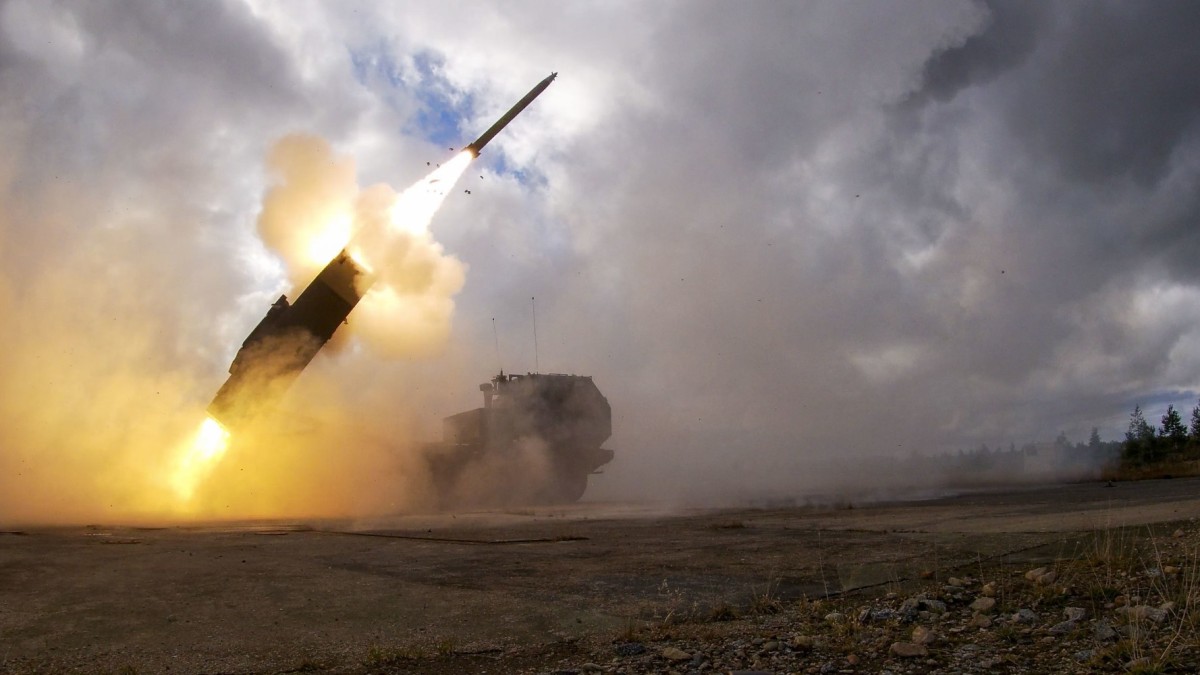MIKAYLA EASLEY

A U.S. Army M142 High Mobility Artillery Rocket System, from 3rd Battalion, 321 Field Artillery Regiment, attached to 41st Field Artillery Brigade, fires a rocket as part of Nordic Strike 22, at Vidsel Test Range, Sweden, Sept. 27, 2022. The Army is putting new emphasis on using technology, including artificial intelligence and machine learning, to speed up the “kill chain” process of locating and firing on targets. (U.S. Army photo by Spc. Devin Klecan)
Army leaders in charge of the service’s respective offensive fires and missile defense modernization programs are working through challenges to effectively integrate sensors and harness data for better-informed and faster decision-making.
“We’re finally getting to a point where we can take advantage of multi-mission data that has always been available to us. We’ve always been able to see the data, but we’ve never been able to do anything with it,” Col. Pat Costello, director of the Army Futures Command air and missile defense cross-functional team, said during a panel discussion at the Space and Missile Defense Symposium on Tuesday.
Effectively leveraging data for multi-domain operations has been one of the Army’s top priorities as it looks to deter more modern and technologically advanced adversaries. During events like Project Convergence — the Army’s experiment to test interoperability for the Pentagon’s Joint All-Domain Command and Control (JADC2) concept — service leaders have noted difficulties in standardizing and understanding data so that it can be accurately disseminated across the Army and Joint Force.
Rather than not being able to see data from other mission sensors, Costello described the current integration problem for the AMD CFT as an inability to leverage data in a meaningful way.
“How do the systems interact with each other? How do we take advantage of data that’s always been available to rotary systems on the offensive fires side of the house, but are useful when it comes to either counter-UAS or cruise missile defense — you name it — and vice versa,” he said. “For me, integration is really about that exchange of data and what we’re doing about it and how the systems that we have at our disposal interact.”
Col. Rory Crooks, director of the Army Futures Command long-range precision fires cross-functional team, said during the panel that he’s developed specific requirements to address integration challenges that help close “joint kill webs” — that is, the multi-layered and multi-directional structure of attack that leverages assets across the services.
A key goal is enabling data sharing between today’s bespoke sensors that were designed for siloed and specific platforms or missions, he said.
“Really being able to share this data today under network-centric constraints means that we have to focus on standards — formatting standards, message formatting standards, standard data transport pipes and so forth,” Crooks said.
Those standards will be important until the service can pivot to more data-centric ways of sharing data between sensors, he added. It’s an important step to eventually getting to a unified data fabric and embracing microservices that will allow the Army to consume data and pass it off at machine-like speed, he said.
But data is only useful if it’s relevant to a commander or operator who is using it, Crooks noted. That need is driving his requirement for a common command-and-control operational picture.
“Data is only a commodity if it helps to drive engagement decisions, and those decisions are by commanders with authority and usually with a responsible approach to risk that allows them to make those decisions,” he said. “We have to get that relevant data — not all data — but only that which is relevant to really solve the problems that a commander at an echelon will frame so that he can close that kill loop or kill chain.”
Integrating sensors is a near-term challenge Crooks’ team is getting at. The Army is currently conducting experimentation on edge-to-cloud capabilities that allows them to duplicate a data fabric in small ways, he noted.
“We’ve developed deliberate microservices that allow us to go in and reach in whatever data format it was in, you can grab the data out and at machine speeds pass it to whoever needs it in the kill chain to complete that kill chain,” he explained. “That, to me, is what you start in the near term until you get the capabilities delivered to really approach this from a more holistic, data-centric way.”
As the Army works to improve how its sensors disseminate relevant data across the service, they can widen who is able to access key information within the service — all the way down to the division, Crooks noted. Through this decentralization, capabilities become more readily available to decision-makers at different unit levels, he said.
“To solve those problems down at the lowest echelon by giving them the best relevant data to help them solve their problems — if you localize it down to the level where it’s personal, where blood is being shed, that’s how we can scale up this fight with both offensive and defensive fires,” Crooks said.
No comments:
Post a Comment